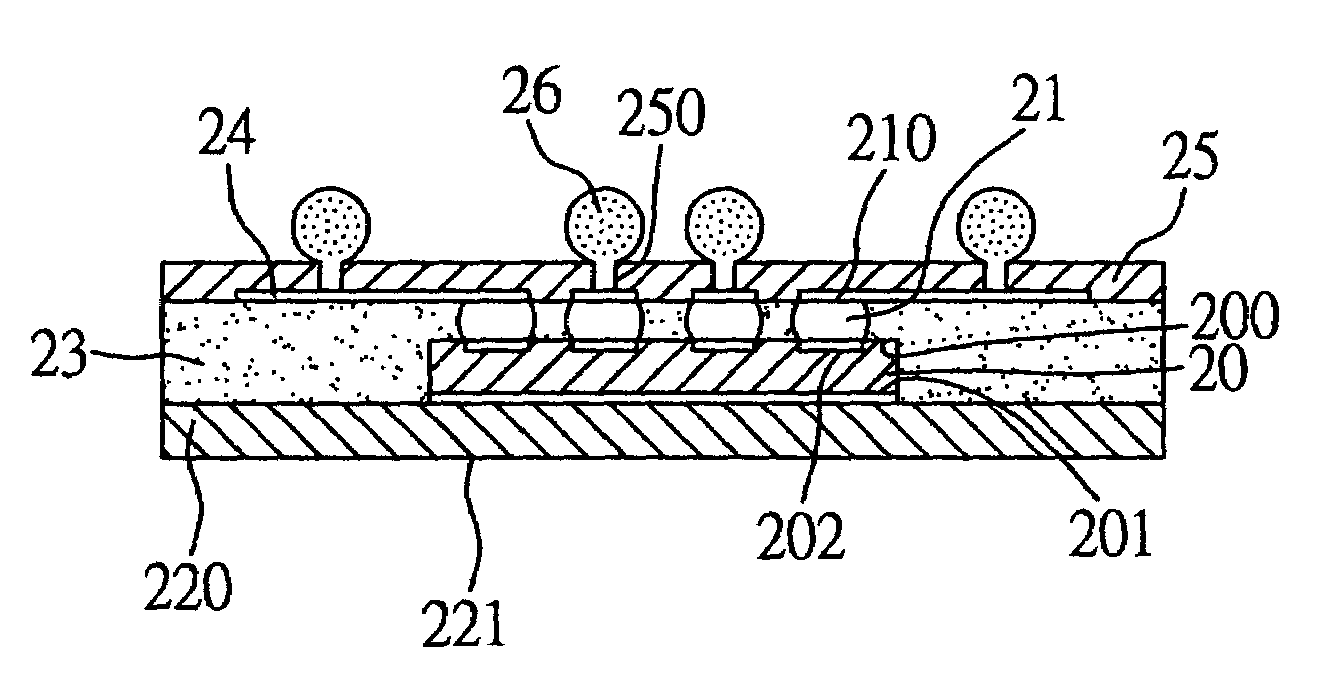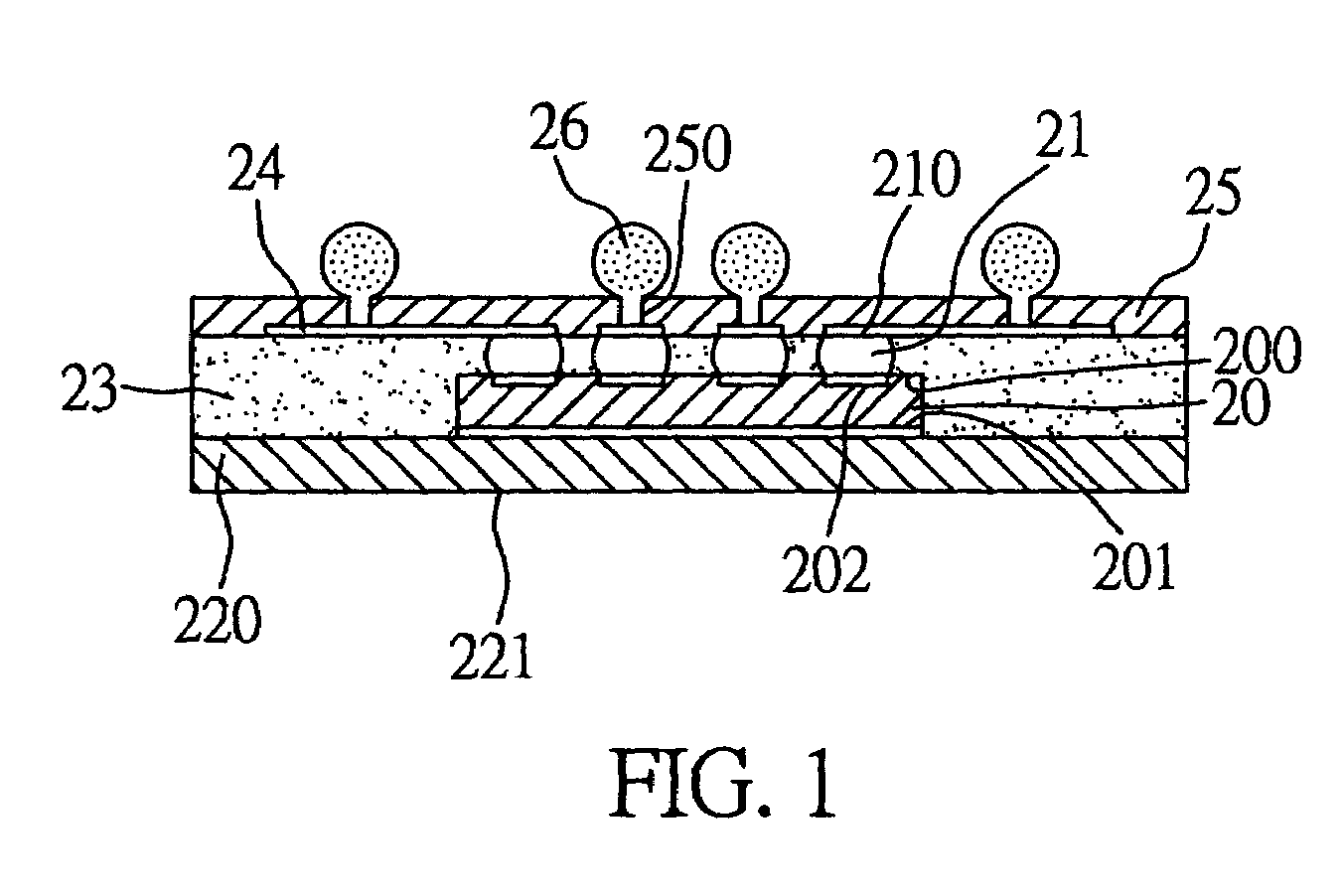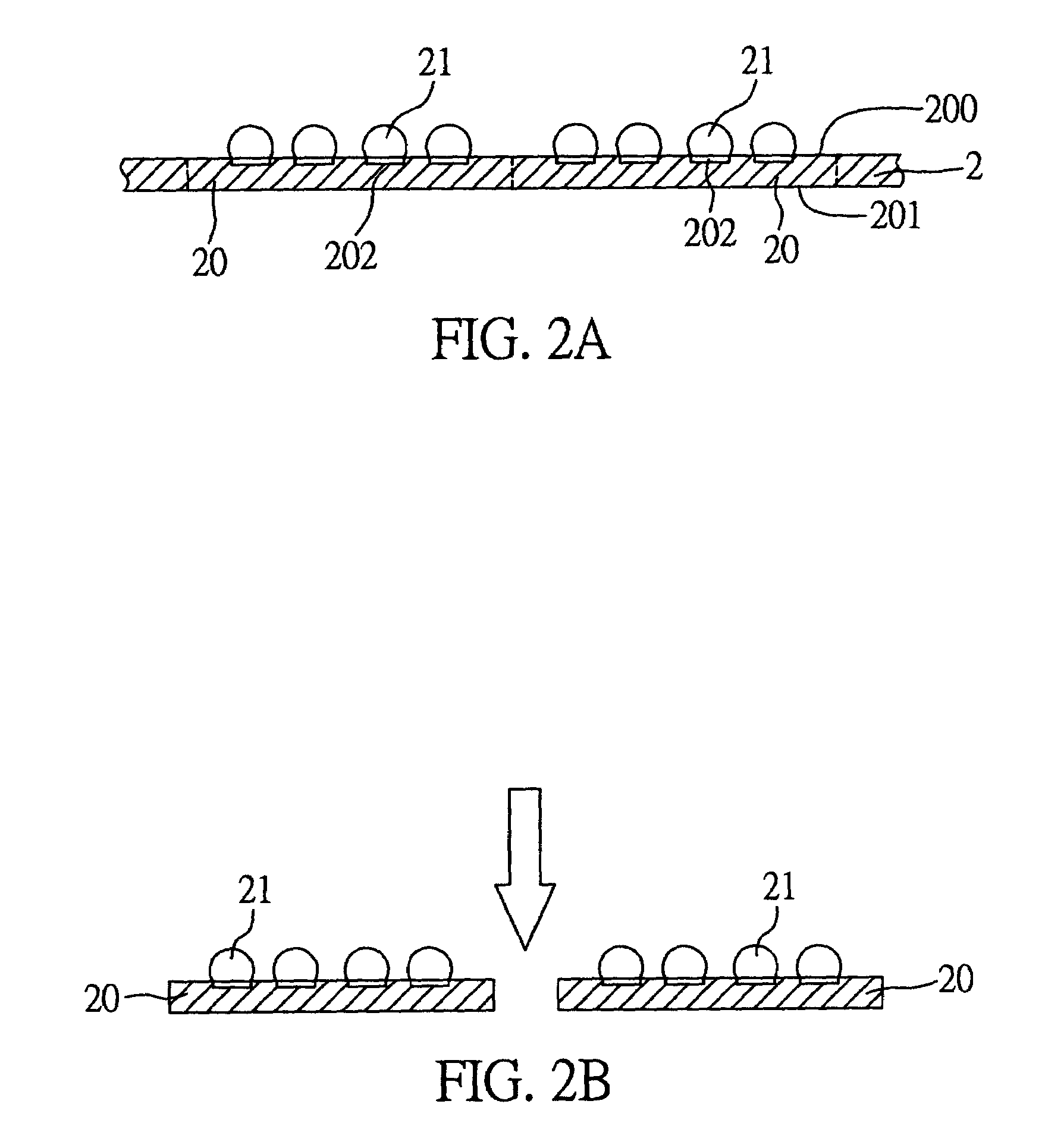Thermally enhanced semiconductor package
a technology of semiconductor packages and heat dissipation efficiency, applied in semiconductor devices, semiconductor/solid-state device details, electrical apparatus, etc., can solve the problems of inability to accurately correspond to the position of the bond pads, the chip scale package is defective, and the bond pads underneath the first dielectric layer cannot be easily and precisely recognized by lasers, so as to improve the heat dissipation efficiency of the package, improve the production yield of the semiconductor package, and effectively dissipate the heat produced
- Summary
- Abstract
- Description
- Claims
- Application Information
AI Technical Summary
Benefits of technology
Problems solved by technology
Method used
Image
Examples
first preferred embodiment
[0020]As shown in FIG. 1, the thermally enhanced semiconductor package according to the first preferred embodiment of the invention comprises: at least one chip 20 having an active surface 200 and an opposite inactive surface 201, the active surface 200 formed with a plurality of bond pads 202 thereon; a conductive bump 21 formed on each of the bond pads 202 of the chip 20; a heat sink 220 attached to the inactive surface 201 of the chip 20 and having a surface area larger than that of the chip 20; an encapsulation body 23 for encapsulating the heat sink 220, chip 20 and conductive bumps 21, wherein a bottom 221 of the heat sink 220 and ends 210 of the conductive bumps 21 are exposed to outside of the encapsulation body 23; a plurality of conductive traces 24 formed on the encapsulation body 23 and electrically connected to the exposed ends 210 of the conductive bumps 21; a solder mask layer 25 applied over the conductive traces 24 and formed with a plurality of openings 250 for exp...
second preferred embodiment
[0031]FIG. 3 illustrates a semiconductor package according to the second preferred embodiment of the invention. As shown in FIG. 3, this semiconductor package is structurally similar to that of the first embodiment, with the difference in that after the conductive traces 24 (hereinafter referred to as “first conductive traces”) are formed on the encapsulation body 23, a dielectric layer 28 is applied over the first conductive traces 24, and a laser drilling technique is employed to form a plurality of vias 280 through the dielectric layer 28 for exposing predetermined portions of the first conductive traces 24. Then, a plurality of second conductive traces 29 are formed on the dielectric layer 28, and each of the second conductive traces 29 is electrically connected to at least one of the exposed portions of the first conductive traces 24.
[0032]Thereafter, the solder mask layer 25 is applied over the second conductive traces 29 and formed with a plurality of openings 250 for exposin...
third preferred embodiment
[0034]FIG. 4 illustrates a semiconductor package according to the third preferred embodiment of the invention. As shown in FIG. 4, this semiconductor package is structurally similar to that of the first embodiment, with the difference in that the surface 223 for attaching the chip 20 of the heat sink 220 is formed with a plurality of recessed portions 222 to allow the resin material forming the encapsulation body 23 and the adhesive 27 adhering the chip 20 and heat sink 220 to fill into the recessed portions 222, so as to enhance adhesion between the surface 223 of the heat sink 220 and the encapsulation body 23 and adhesion between the surface 223 and the chip 20. Alternatively, the surface 223 of the heat sink 220 can be roughened (not shown) to also make the heat sink 220 more strongly adhered to the encapsulation body 23 and the chip 20.
PUM
 Login to View More
Login to View More Abstract
Description
Claims
Application Information
 Login to View More
Login to View More - R&D
- Intellectual Property
- Life Sciences
- Materials
- Tech Scout
- Unparalleled Data Quality
- Higher Quality Content
- 60% Fewer Hallucinations
Browse by: Latest US Patents, China's latest patents, Technical Efficacy Thesaurus, Application Domain, Technology Topic, Popular Technical Reports.
© 2025 PatSnap. All rights reserved.Legal|Privacy policy|Modern Slavery Act Transparency Statement|Sitemap|About US| Contact US: help@patsnap.com



